Growing Pains or Growing Old Pains – What best describes your old gravity sewer?
What happens when your sewerage network gets too old? Your old clay pipes have cracked or are filled with roots, every time it rains it seems like its a direct line from the clouds to the Treatment Plant. People in the community start asking why you are spending a load of money on treating rainwater instead of just sewerage.
 If you are part of a coastal community it could be worse, your old broken pipes could be letting seawater into the system every time there is a high tide or major storm. Salt water can cause major problems at the Treatment Plant. For communities like Miami Beach who get storm surges flooding their sewers and closing their beach on an increasingly regular basis it can cause major economic and health risks. Santa Pola in the Alicante area of Spain found that the impact of global warming and rising sea levels caused a complete failure of their old sewer system.
If you are part of a coastal community it could be worse, your old broken pipes could be letting seawater into the system every time there is a high tide or major storm. Salt water can cause major problems at the Treatment Plant. For communities like Miami Beach who get storm surges flooding their sewers and closing their beach on an increasingly regular basis it can cause major economic and health risks. Santa Pola in the Alicante area of Spain found that the impact of global warming and rising sea levels caused a complete failure of their old sewer system.
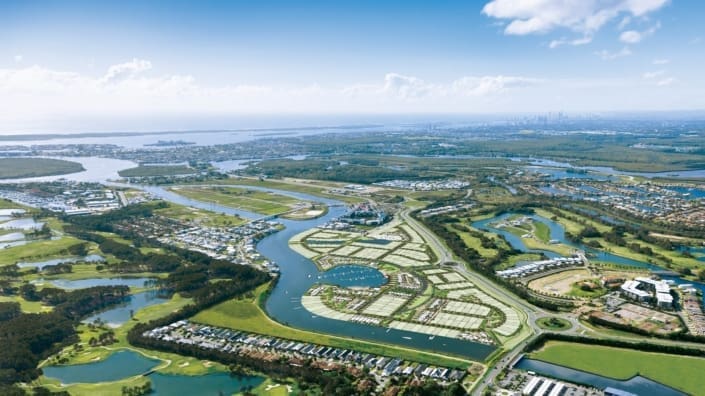 The town of Santa Pola with over 10,000 homes replaced their whole gravity sewer system with a Flovac vacuum sewerage system. As vacuum mains are laid in shallow trenches it was possible to skirt around, above and below exiting infrastructure and eventually replace the network. You can read more about that project here.
The town of Santa Pola with over 10,000 homes replaced their whole gravity sewer system with a Flovac vacuum sewerage system. As vacuum mains are laid in shallow trenches it was possible to skirt around, above and below exiting infrastructure and eventually replace the network. You can read more about that project here.
It could be that the old gravity sewer system with large heavy pipes just wasn’t suited to the ground conditions that are often found near the coast or in swampy area’s and that over time they no longer have the correct grade to remove the sewage or have pipes that continually break allowing ground water into the system as well as blockages. This occurred at Hope Island on Queensland’s famous Gold Coast. Gold Coast Council have developed a Master Plan and slowly replaced a number of area’s with vacuum sewers. When the original gravity sewer was laid, there was no choice, developers were racing to put up houses and council at that stage had no experience with vacuum sewers and so deep gravity mains were installed. Almost immediately problems were noticed as the ground subsided in different area’s. Sewage backed up in pipes and was unable to flow as the grades first allowed for in the networks were no longer the same.
 When looking at upgrading a gravity sewer, pipe relining can be an option, but in many cases this becomes an ongoing expensive option and be too difficult in a large network. Some utilities just look to replace the old pipework, but in most communities this is just not practical. This could mean uprooted gardens, roads out of use for a number of months, noise, dust and a huge cost.
When looking at upgrading a gravity sewer, pipe relining can be an option, but in many cases this becomes an ongoing expensive option and be too difficult in a large network. Some utilities just look to replace the old pipework, but in most communities this is just not practical. This could mean uprooted gardens, roads out of use for a number of months, noise, dust and a huge cost.
For many communities it is the size of the town that has changed dramatically over the years. In most cases this has meant an increase in the population as people move from the city to the coast. Developers move into the fringes of the town. Planning regulations change allowing for sub dividing of the old large land blocks or height and density changes. This puts pressure on existing sewers that are already not coping due to age and lack of maintenance. This has happened, not only in small coastal towns but in larger developed cities like Abu Dhabi and New Delhi. Vacuum sewers can be used to supplement the towns aging sewer system, loads can be taken off the main system by a series of collection pits and shallow pipework.
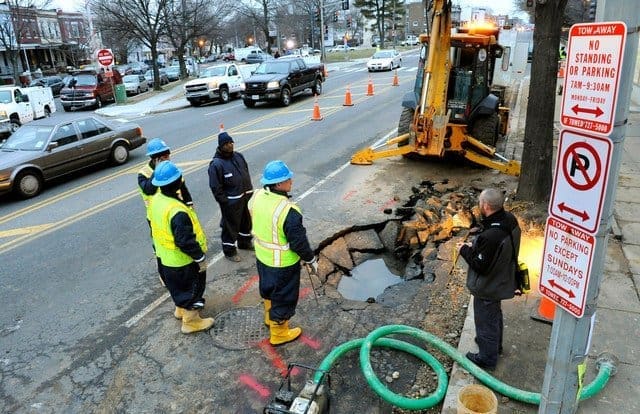 Flovac vacuum sewers have shown time and again, their versatility. This means either their ability to handle density changes or climate changes. It might even mean changes in ground conditions as happened in Christchurch New Zealand when they suffered from a terrible earthquake. The old gravity sewers in the city and surrounding suburbs broke and left residents with no service for months. Vacuum sewers have now replaced a large portion of the gravity sewers in Christchurch and although difficult has proved to be a better long term solution for the residents and operators. Christchurch systems
Flovac vacuum sewers have shown time and again, their versatility. This means either their ability to handle density changes or climate changes. It might even mean changes in ground conditions as happened in Christchurch New Zealand when they suffered from a terrible earthquake. The old gravity sewers in the city and surrounding suburbs broke and left residents with no service for months. Vacuum sewers have now replaced a large portion of the gravity sewers in Christchurch and although difficult has proved to be a better long term solution for the residents and operators. Christchurch systems
Vacuum sewers should not be looked at as the only solution in many of these towns. In some cases a combination of grinder pumps, gravity and vacuum is going to be the better result for the community. Whether the problem is growing pains, or growing old pains a vacuum solution might offer the versatility that you need.


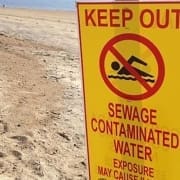
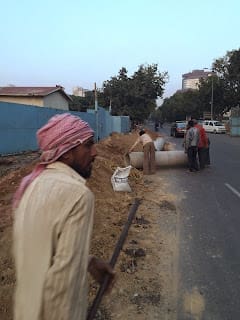 Will this information give a municipality or developer the full picture? What is being left off this analysis?
Will this information give a municipality or developer the full picture? What is being left off this analysis? Operational Costs and Risks. – Health and Safety of operators, Odour, gas explosions, fatbergs, wet wipes clogging pumps, exfiltration damage. None of these are adequately covered in assessments.
Operational Costs and Risks. – Health and Safety of operators, Odour, gas explosions, fatbergs, wet wipes clogging pumps, exfiltration damage. None of these are adequately covered in assessments. Increased Risk – is there an assessment given over possible EPA or environmental fines if a gravity system or low pressure system discharges sewerage into a sensitive area. What happens in a tourism area if the sewage overflows? How about in a fishery habitat?
Increased Risk – is there an assessment given over possible EPA or environmental fines if a gravity system or low pressure system discharges sewerage into a sensitive area. What happens in a tourism area if the sewage overflows? How about in a fishery habitat?

 Vacuum valves are opened by the difference in air pressure automatically and take in the wastewater from pits. No electricity at the pips is required. The pressure differential allows sewage to flow into the vacuum station and then it is pumped to the Treatment Plant.
Vacuum valves are opened by the difference in air pressure automatically and take in the wastewater from pits. No electricity at the pips is required. The pressure differential allows sewage to flow into the vacuum station and then it is pumped to the Treatment Plant.
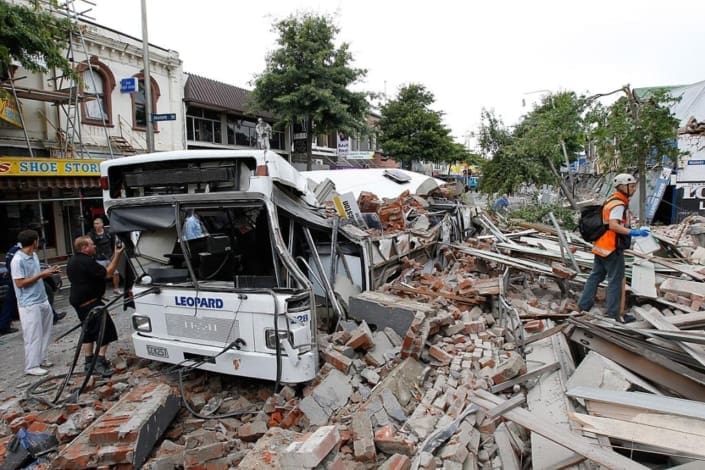 SCIRT partner McConnell Dowell is more than halfway through a big project to build a Flovac vacuum wastewater system in the Christchurch residential suburb of Shirley – the first area of the South Island to use such technology.
SCIRT partner McConnell Dowell is more than halfway through a big project to build a Flovac vacuum wastewater system in the Christchurch residential suburb of Shirley – the first area of the South Island to use such technology. After the earthquakes, the slope changed in many parts of the city, so wastewater was running in the wrong direction. The Flovac vacuum system will offer much greater resilience if there are further large earthquakes, especially in areas considered prone to liquefaction.
After the earthquakes, the slope changed in many parts of the city, so wastewater was running in the wrong direction. The Flovac vacuum system will offer much greater resilience if there are further large earthquakes, especially in areas considered prone to liquefaction. Wastewater will arrive at the Shirley catchments new pumping station, on Golf Links Road, from small collection chambers, usually located on the grass berm of a street, each serving up to four properties. The only visible parts in most streets will be collection chamber lids and man-holes at ground-level, while vent stacks will sit against property boundaries.
Wastewater will arrive at the Shirley catchments new pumping station, on Golf Links Road, from small collection chambers, usually located on the grass berm of a street, each serving up to four properties. The only visible parts in most streets will be collection chamber lids and man-holes at ground-level, while vent stacks will sit against property boundaries. Like in other parts of the city, wastewater from the new pumping station will go via the normal gravity system southeast to the wastewater treatment plant at Bromley.
Like in other parts of the city, wastewater from the new pumping station will go via the normal gravity system southeast to the wastewater treatment plant at Bromley.